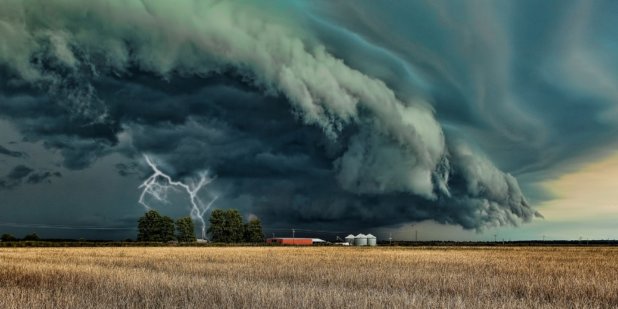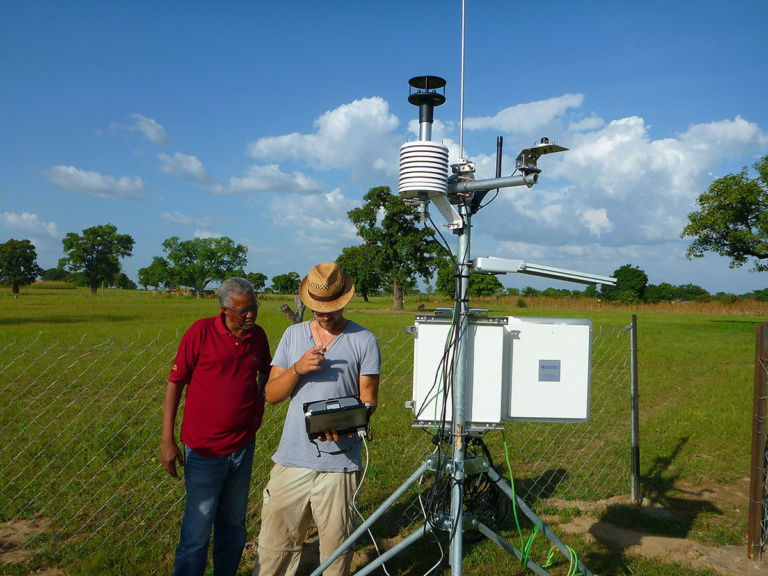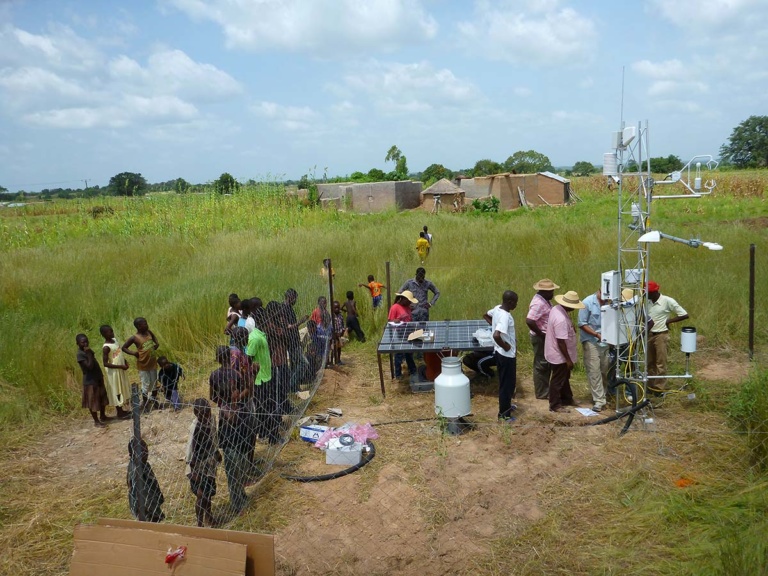- About
- Topics
- Picks
- Audio
- Story
- In-Depth
- Opinion
- News
- Donate
-
Signup for our newsletterOur Editors' Best Picks.Send
Read, Debate: Engage.

which is part of the Karlsruhe Institute of Technology (KIT). In Garmisch, with a view of rugged alpine mountains, he and his team developed a groundbreaking technology, using a revolutionary method for rain measurement and forecast.
The innovation is based on a physical phenomenon that was already discovered in the 1940s by American military engineers: Raindrops tend to dampen mobile signals. They don't interrupt phone calls anymore. However, the attenuation of the signal strength can be precisely quantified.
Kunstmann and his team have developed a computer program that allows them to calculate the amount of precipitation that goes down between two signal masts. All they need are transmission data, provided by the mobile operators.
In September 2016 Kunstmann and his scientists were able to use already 3300 masts for their research in Germany. They are hoping for a nationwide coverage later this year. The results were promising right from the beginning of the project, the measurements matched by more than 80 percent with the results of conventional rain measurement.
In Germany rain measurement is perfectly organized: About 2000 rain gauges are operating according to the German weather service (DWD), almost half of them working fully automatically. And there are 17 rain radar units in place. "In Germany, our method is just a complement," Kunstmann says. "Although it might be useful in mountain regions or in cities, where signals are sometimes blocked."
Rain gauges provide one spot measurement only, Kunstmann explains, a rain radar allows only for indirect measurement: it sees rain cells at high altitude, but it doesn't tell how much rain makes it to the ground. "With mobile radio signals, we can measure rain over long distances at ground level."
The size of the drops, whether spraying or cloudburst, does not matter. Only snowflakes can not be detected.
Compared to these instruments, rain measurement in Burkina Faso looks like a past century's arrangement: there's a single rain radar operating at the international airport of Ouagadougou; A total of 140 rain gauges are in place, ten of them transmitting their data automatically. The remaining data are still written down on paper and stored in file folders.

In many african countries the entire infrastructure is in questionable condition, at best – except the mobile network. Most streets are fortified in the city centers only. Most farmers are excluded from stable power supply and have no access to clean drinking water. For them, the radio is the most important connection to the outside world. And the mobile phone. Of the roughly 18 million inhabitants of Burkina Faso, just under 15 million mobile phones are at use by 2015.
"A total of 93 percent of Africa's area is covered by mobile network, in Burkina Faso it is said to be 98 percent."
For Kunstmann and his team, this is the most attractive aspect of their project - and an great opportunity for this huge continent. "With our method, there is no need for additional devices to be installed," he says. Neither does the maintenance cause any problems, because it will be done by the provides, since a trouble-free operating network is key to their business success.
In the summer of 2012, when the rainy season in Burkina Faso had already started, a research group from the University of Ouagadougou took up Kunstmann's new method and started a first field experiment - and succeeded: the scientists were able to measure over 95 percent of the rains measured conventionally.
"But only an international network allows for a weather forecast out of local rain measurements: The farmers of Burkina Faso must know when the southern neighbors - Ghana, Togo, the Ivory Coast - report the onset of the rainy season."
In order to expand rain measurement across the whole of West Africa, it is crucial to encourage mobile network providers to cooperate with meteorological services and research institutes in the region. There is no direct added value for companies, but also there are no additional costs.
In Burkina Faso, the providers are ready to cooperate. “Telecel Faso”, operating 450 signal masts, agreed to provide data. And just recently, “Telmob”, the country's largest mobile operator, is set to sign a cooperation agreement.

Kunstmann's project is part of an initiative called WASCAL (West African Science Service Center on Climate Change and Adapted Land Use), initiated by ten West African countries – Benin, Burkina Faso, Ivory Coast, Gambia, Ghana, Mali, Niger, Nigeria, Senegal, Togo – and Germany's Ministry of Research. The aim is to prepare the people for climate change, inter alia through the establishment of climate competence centers throughout West Africa.
The “Deutsche Forschungsgemeinschaft”, the “Energiesiftung Baden-Württemberg” and the “Helmholtz Gemeinschaft” are also providing funds respectively. Parts of the funding are about to expire, but Harald Kunstmann is optimistic about getting new funding. "The question of how to adapt to climate change is of such great importance to society that we should use all our technical know-how to support the most important economic sector in Africa, agriculture. Our project shows that this is possible without expensive investments."